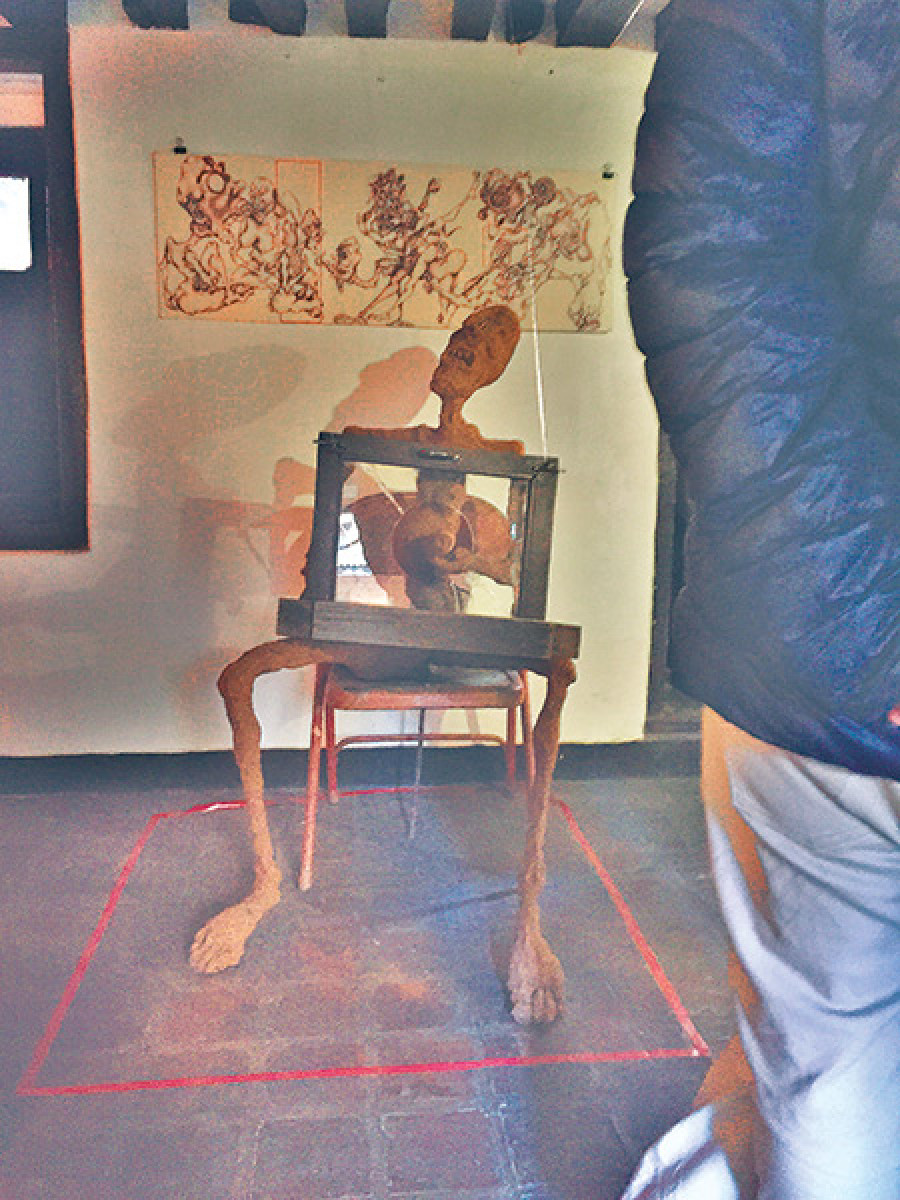Entertainment
Reclaiming the word ‘Boksi’
As part of their monthly ‘Moonshine Affairs’ series, on every full moon the Kaalo.101 art space in Nagbahal, Patan, hosts a new exhibition of art works.
Rahul Dhakal
As part of their monthly ‘Moonshine Affairs’ series, on every full moon the Kaalo.101 art space in Nagbahal, Patan, hosts a new exhibition of art works. The first of these, called Boksi, began on January 2 and will remain in exhibit till the end of the month. The show features Nepali artists, Anjila Manandar, Keepa Makey, and Irina Giri, who, “Through their works, challenge preconceptions on gender, age, and sex, and pry open questions regarding womanhood—what it is to be a ‘proper’ woman in a patriarchal society and of course the flipside of that, which is, what it means to be regarded as a witch, a boksi,” said Helena Asha Knox, the manager of Kaalo.101.
The exhibition showcased two pieces by each artist. Anjila Manandar’s drawings and clay sculptures dwell on corporeality, eroticism and, violence. In her drawings, human-like forms grip, claw and gnaw at each other in vast orgiastic scenes. Her sculptures were also of human-like forms, the style of which was somewhat reminiscent of the Swiss modernist sculptor Alberto Giacometti’s works.
The first of the two pieces focused on the sexual objectification of women under the male gaze, and featured the figure of a man masturbating behind a window with his penis being the only part of him that transcended the reflective screen. The second sculpture was of two figures, locked in the sexual act, under a red light—one figure domineers over the other, their postures bespeaking violence.

Sexual violence is also a subject that Keepa Maskey explores in her fabric-based sculptures. For the exhibition she created large web-like constructs using fabric and found materials and one of these was of frayed blood stained bed sheets strung up on wires so that it seemed as if it were floating in mid air.
Aside from violence in sex, this particular piece doubles as a reflection of the stigma attached to menstruation. The piece is beautiful in its symmetry and confrontational in character—since the sheets are strung up, the viewer can not physically look down on the blood stains and instead is forced to come face to face, so to speak, with it.
Lastly, there were the two video installations by Irina Giri. Both her site-specific pieces consisted of a compilation of video vignettes, essentially self portraits, that were reflected onto various mirrors and projected onto the viewers themselves. By variously reflecting on her image and transposing it onto the space, the piece creates a visual echo that confronts, even transcends, the alienation present in the solitary images of her gazing into the reflection of her own face.
The label ‘Boksi’, as the show is titled, has always been a term inflicted on women who have challenged social and cultural norms, and carries with it a history of gendered oppression and violence. Through their works the artists in this exhibition conduct a reclaiming of sorts as someone that ought to be respected and celebrated in the context of dissent towards oppressive standards and with the hope of bringing about change.
The exhibition will continue through Jan 31.




 10.12°C Kathmandu
10.12°C Kathmandu










